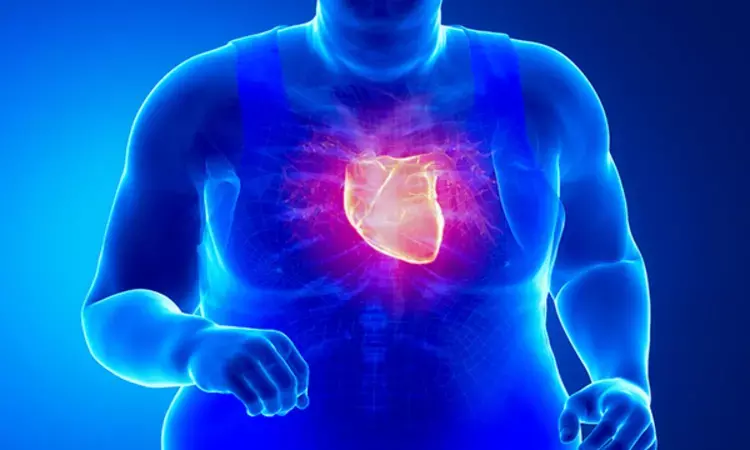- Home
- Medical news & Guidelines
- Anesthesiology
- Cardiology and CTVS
- Critical Care
- Dentistry
- Dermatology
- Diabetes and Endocrinology
- ENT
- Gastroenterology
- Medicine
- Nephrology
- Neurology
- Obstretics-Gynaecology
- Oncology
- Ophthalmology
- Orthopaedics
- Pediatrics-Neonatology
- Psychiatry
- Pulmonology
- Radiology
- Surgery
- Urology
- Laboratory Medicine
- Diet
- Nursing
- Paramedical
- Physiotherapy
- Health news
- Fact Check
- Bone Health Fact Check
- Brain Health Fact Check
- Cancer Related Fact Check
- Child Care Fact Check
- Dental and oral health fact check
- Diabetes and metabolic health fact check
- Diet and Nutrition Fact Check
- Eye and ENT Care Fact Check
- Fitness fact check
- Gut health fact check
- Heart health fact check
- Kidney health fact check
- Medical education fact check
- Men's health fact check
- Respiratory fact check
- Skin and hair care fact check
- Vaccine and Immunization fact check
- Women's health fact check
- AYUSH
- State News
- Andaman and Nicobar Islands
- Andhra Pradesh
- Arunachal Pradesh
- Assam
- Bihar
- Chandigarh
- Chattisgarh
- Dadra and Nagar Haveli
- Daman and Diu
- Delhi
- Goa
- Gujarat
- Haryana
- Himachal Pradesh
- Jammu & Kashmir
- Jharkhand
- Karnataka
- Kerala
- Ladakh
- Lakshadweep
- Madhya Pradesh
- Maharashtra
- Manipur
- Meghalaya
- Mizoram
- Nagaland
- Odisha
- Puducherry
- Punjab
- Rajasthan
- Sikkim
- Tamil Nadu
- Telangana
- Tripura
- Uttar Pradesh
- Uttrakhand
- West Bengal
- Medical Education
- Industry
Obesity Cardiomyopathy Identified as Distinct Pathology Linked to Sudden Cardiac Death: JACC

UK: Based on records from a national referral centre in the UK, the researchers have identified obesity cardiomyopathy (OCM) as a distinct pathology associated with sudden cardiac death (SCD). It is commonly observed in young males with increased body mass index (BMI).
"Autopsies revealed that out of more than 6,400 SCDs, 53 people who died of obesity had cardiomegaly without a medical history indicating a usual aetiology of heart disease," the researchers reported in the study published in JACC: Advances. The mean age at death was 42 years, including 64% of men.
The pathology was suggested as obesity cardiomyopathy, characterized by right ventricular (RV) hypertrophy and symmetrical left ventricular (LV) hypertrophy in the absence of infiltrative disease Or myocyte disarray. Fibrosis was seen in only a minority of cases.
"There is no full understanding of the cause of OCM associated with SCD," the researchers wrote. "Only a small proportion of cases had fibrosis on microscopy indicating that SCD in OCM may be mediated through increased ventricular mass."
Previous studies have shown that obesity cardiomyopathy can be associated with sudden cardiac death, but pathologic features have not been described well. Joseph Westaby, St. George's University of London and St George's University Hospitals NHS Foundation Trust, London, United Kingdom, and colleagues, therefore, aimed to characterize the pathological and clinical features of OCM associated with SCD in a retrospective case-control autopsy study.
In the absence of other causes, OCM was identified by an increased heart weight (>550 g in males; >450 g in females) in people with obesity (BMI ≥30 kg/m2). Cases of OCM with SCD were compared to age and sex-matched SCD controls with obesity or with normal weight (BMI 18.5-24.9 kg/m2) and morphologically normal hearts.
Autopsy measures were atrial dimensions, heart weight, epicardial adipose tissue, and ventricular wall thickness. Fibrosis was assessed microscopically.
The study led to the following findings:
- Of 6,457 SCD cases, 53 cases of OCM were identified and matched to 106 controls with obesity and 106 normal weight controls.
- The OCM mean age at death of individuals with OCM was 42 ± 12 with a male predominance (n = 34, 64%).
- Males died younger than females (40 ± 13 versus 45 ± 10).
- BMI was increased in OCM cases compared to controls with obesity (42 ± 8 versus 35 ± 5).
- The average heart weight was 598 ± 93 g in OCM.
- There were increases in right and left ventricular wall thickness in OCM cases compared to controls.
- Right ventricular epicardial fat was increased in OCM compared to normal weight controls only.
- Left ventricular fibrosis was identified in 13% of the cases
"Obesity cardiomyopathy may be a specific pathological entity associated with SCD," the researchers wrote. "It is most commonly seen in young males with increased BMI."
"The relevance and basis of OCM as a marker of risk for SCD now requires assessment in population studies," the researchers concluded.
Reference:
Westaby J, et al "Obesity cardiomyopathy in sudden cardiac death: a distinct entity? A comparative study" JACC Adv 2023; DOI: 10.1016/j.jacadv.2023.100414.
Dr Kamal Kant Kohli-MBBS, DTCD- a chest specialist with more than 30 years of practice and a flair for writing clinical articles, Dr Kamal Kant Kohli joined Medical Dialogues as a Chief Editor of Medical News. Besides writing articles, as an editor, he proofreads and verifies all the medical content published on Medical Dialogues including those coming from journals, studies,medical conferences,guidelines etc. Email: drkohli@medicaldialogues.in. Contact no. 011-43720751


